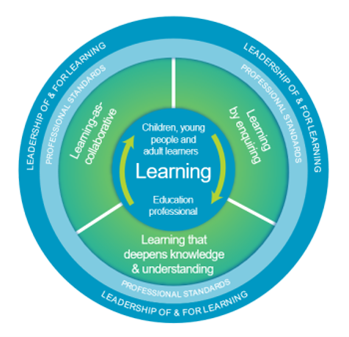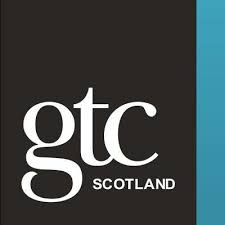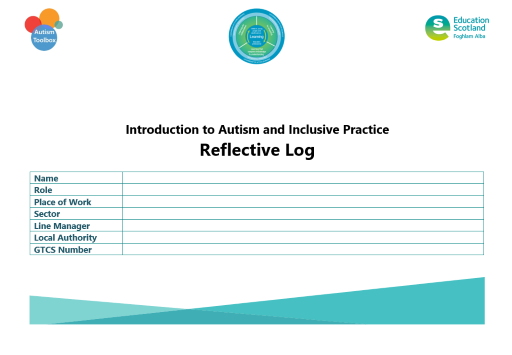Use 'Print preview' to check the number of pages and printer settings.
Print functionality varies between browsers.
Printable page generated Thursday, 20 November 2025, 7:20 AM
Module overview
Module overview
Welcome to the free module An Introduction to Autism and Inclusive Practice. It is designed to provide an introduction for educational staff and anyone with an interest in supporting autistic learners in the settings that they work and support. This introductory module aims to help you develop an awareness of what autism is, its impact and how it can be supported within an inclusive school community. It may also be of interest if you work in the voluntary sector or simply have an interest in autism and inclusive practice.
Introduction
An Introduction to Autism and Inclusive Practice is supported by the 2019 refreshed Autism Toolbox and provides you with a basic introduction to autism and inclusive practice. It is split into six sections, which you can access via the navigation panel on the left-hand side of each page.
This module supports the requirement for teachers in Scotland to maintain the General Teaching Council Scotland’s (GTCS) professional standards of which professional values and personal commitment are central.
Learning outcomes
After studying this introductory module and participating in the tasks, you will have an awareness of:
- what autism is and its impact
- the education context in Scotland
- autism and inclusive practice
- how autism is identified
- supporting autistic learners and their families
- a range of further information, reading and signposting.
The national model of professional learning

This module also follows the national model of professional learning developed by Education Scotland, which underlines that professional learning should challenge and develop thinking, knowledge, skills and understanding, and should be underpinned by developing skills of enquiry and criticality.
The national model also emphasises that professional learning needs to be interactive, reflective and involve learning both with and from others. It is important when considering how to study the module that the above principles are taken into consideration.
Further information on the national model of professional learning is available on the National Improvement Hub.
How you can study this module
This module has been developed to support flexible learning at your own pace alone or with a colleague or group of colleagues. If studied as a module, the core content should take approximately three hours to work through. You may work through this module in several different ways: sequentially or using the materials as a reference guide with sections explored in any order. However, as you work through the module think about not only your role but also that of other partners and colleagues you work with. You might find it helpful to form an informal study group with colleagues and use some of the activities as a basis for group discussion.
We have also provided downloadable alternative formats of the course. You can find these on the first page of each section.
A Reflective Log is available to download for you to evidence your professional enquiry and learning. The Reflective Log can also be used for collegiate discussions and will support Annual Reviews, GTCS Professional Update and contribute to applications for GTCS Professional Recognition.
How you can study this module
This module has been developed to support flexible learning at your own pace alone or with a colleague or group of colleagues. If studied as a module, the core content should take approximately three hours to work through. You may work through this module in several different ways: sequentially or using the materials as a reference guide with sections explored in any order. However, as you work through the module think about not only your role but also that of other partners and colleagues you work with. You might find it helpful to form an informal study group with colleagues and use some of the activities as a basis for group discussion.
We have also provided downloadable alternative formats of the course. You can find these on the first page of each section.
A Reflective Log is available to download for you to evidence your professional enquiry and learning. The Reflective Log can also be used for collegiate discussions and will support Annual Reviews, GTCS Professional Update and contribute to applications for GTCS Professional Recognition.
Downloadable files and further reading within this module
Throughout this module there are files which you need to download to help you engage with the activities and others which have been included to support further professional knowledge and understanding of autism and inclusive practice.
The above image of a white arrow pointing down and the text ‘you will need to download this file’ lets you know when you must download the file to engage in the activities.
The above image of a grey book lets you know when the download or link is for you to engage in further reading if you wish to.
Module assessment
During the module, you can test your knowledge by taking some practice quizzes. At the end of the module, you will be asked to complete an assessed quiz. If you gain a score of at least 70% in the assessed quiz, have attempted the practice quizzes and have clicked through all the pages of the module, you will earn a digital badge.
Badge information
What is a badged course?
Badges are a means of digitally recognising certain skills and achievements acquired through informal study and are entirely optional. They do not carry any formal credit as they are not subject to the same rigour as formal assessment, nor are they proof that you have studied the full unit or course. They are a useful means of demonstrating participation and recognising informal learning.
If you would like to learn more about badges, you will find more information on the following websites:
- Open Badges – this information is provided by IMS Global, the organisation responsible for the open badge standards
- Digital Badges – this information is provided by HASTAC (Humanities, Arts, Science and Technology Alliance and Collaboratory), a global community working to transform how we learn, and particularly making use of technology.
Gaining your badge
To gain the digital badge for An Introduction to Autism and Inclusive Practice, you will need to:
- Complete the formative activities and short quizzes within the module. They are really helpful in consolidating your learning but there is no pass mark.
- Complete the end-of-module quiz at the end of Section 6 and achieve at least 70%.
When you have successfully achieved the completion criteria, you will receive your badge for An Introduction to Autism and Inclusive Practice. You will receive an email notification that your badge has been awarded and it will appear in the ‘My Badges’ area in your profile. Please note it can take up to 24 hours for a badge to be issued.
Your badge demonstrates that you have achieved the learning outcomes for the module. The digital badge does not represent formal credit or award, but rather it demonstrates successful participation in informal learning activity.
Sharing your badge
Badges awarded within OpenLearn Create can be shared via social media such as Twitter, Facebook or LinkedIn, and to a badge backpack such as Badgr.
Accessing your badge
From within An Introduction to Autism and Inclusive Practice module:
- Go to ‘My profile’ and click on ‘Achievements’. You will see the badge alongside the course title.
- To view the details of the badge, to download it, or to add it to a badge backpack, click on the badge and you will be taken to the badge information page.
- You can either download this page to your computer or add the badge to your badge backpack.
Starting the module
Activity 1 Reflective task
You will need to download the Introduction to Autism and Inclusive Practice Reflective Log.
On page 3 in your Reflective Log, you should start by:
- Using a scale of 1–5 (1 being poor and 5 being very knowledgeable), rate your knowledge and understanding of autism and inclusive practice.
- Consider and record what you hope to achieve in studying this module.
- Complete the template for the self-evaluation wheel.
Acknowledgements
Acknowledgements
Grateful acknowledgement is made to the following sources:
Every effort has been made to contact copyright holders. If any have been inadvertently overlooked the publishers will be pleased to make the necessary arrangements at the first opportunity.
Important: *** against any of the acknowledgements below means that the wording has been dictated by the rights holder/publisher, and cannot be changed.
---------------------------------------------------------------------------------------------------------------------
Autism and inclusive education module course banner: ***Education Scotland. All Rights Reserved.
Autism and inclusive education module course Image: ***Education Scotland. All Rights Reserved.
Autism and inclusive education course badge: ***Education Scotland. All Rights Reserved.
Education Scotland Inclusive Education collection image: ***Education Scotland. All Rights Reserved.
Autism Toolbox Logo: ***The Scottish Government. All Rights Reserved.
Education Scotland Logo: ***Education Scotland. All Rights Reserved.
Curriculum for Excellence Logo: ***Curriculum for Excellence. All Rights Reserved.
GIRFEC Logo: ***Getting It Right For Every Child (GIRFEC). All Rights Reserved.
GTCS Logo: General Teaching Council Scotland
National Model for Professional learning Logo: ***Education Scotland. All Rights Reserved.
Assessment and monitoring icon: ***Assessment and monitoring icon, Inclusion, Wellbeing and Equalities. Education Scotland. This file is licensed under the Creative Commons Attribution-Noncommercial Licence http://creativecommons.org/licenses/by-nc/4.0/
Autism and anxiety icon: ***Autism and anxiety icon. Inclusion, Wellbeing and Equalities. Education Scotland. This file is licensed under the Creative Commons Attribution-Noncommercial Licence http://creativecommons.org/licenses/by-nc/4.0/
Communication icon: ***Communication. Inclusion, Wellbeing and Equalities. Education Scotland. This file is licensed under the Creative Commons Attribution-Noncommercial Licence http://creativecommons.org/licenses/by-nc/4.0/
Download icon: ***Download Icon. Inclusion, Wellbeing and Equalities. Education Scotland. This file is licensed under the Creative Commons Attribution-Noncommercial Licence http://creativecommons.org/licenses/by-nc/4.0/
Further reading and information (book) icon: ***Further reading and information icon. Inclusion, Wellbeing and Equalities. Education Scotland. This file is licensed under the Creative Commons Attribution-Noncommercial Licence http://creativecommons.org/licenses/by-nc/4.0/
Social and Emotional Wellbeing Icon: ***Supporting learners and Families Icon Attribution: Inclusion, Wellbeing and Equalities. Education Scotland. This file is licensed under the Creative Commons Attribution-Noncommercial Licence http://creativecommons.org/licenses/by-nc/3.0
Supporting Learners and Families Icon: ***Supporting learners and Families Icon Attribution: Inclusion, Wellbeing and Equalities. Education Scotland. This file is licensed under the Creative Commons Attribution-Noncommercial Licence http://creativecommons.org/licenses/by-nc/3.0/
Transitions Icon: ***Supporting learners and Families Icon, Inclusion , Wellbeing and Equalities. Education Scotland. This file is licensed under the Creative Commons Attribution-Noncommercial Licence http://creativecommons.org/licenses/by-nc/3.0/
Figure 1 Reflective Log Front Cover: ***Education Scotland. All Rights Reserved.
Figure 2 Autism Icon: ***Education Scotland. All Rights Reserved.
Figure 3 Neurodiversity: ***Education Scotland. All Rights Reserved.
Figure 4 Neurodiversity Overview: ***Education Scotland. All Rights Reserved.
Figure 5 The Scottish Context – Overview: ***The Scottish Context - Overview. Inclusion, Wellbeing and Equalities. Education Scotland. This file is licensed under the Creative Commons Attribution-Noncommercial Licence http://creativecommons.org/licenses/by-nc/4.0/
Figure 6 The Scottish Context – Detailed: ***The Scottish Context - Detailed. Inclusion, Wellbeing and Equalities. Education Scotland. This file is licensed under the Creative Commons AttributioFin-Noncommercial Licence http://creativecommons.org/licenses/by-nc/4.0/
Figure 7 Factors Giving Rise to ASN: ***Factors Giving Rise to ASN. Inclusion, Wellbeing and Equalities. Education Scotland. This file is licensed under the Creative Commons Attribution-Noncommercial Licence http://creativecommons.org/licenses/by-nc/4.0/
Figure 8 Four Key features of inclusion for learners: ***Four Key Features of Inclusion. Inclusion, Wellbeing and Equalities. Education Scotland. This file is licensed under the Creative Commons AttribuFition-Noncommercial Licence http://creativecommons.org/licenses/by-nc/4.0/
Figure 9 Autism core characteristics: ***Autism Core Characteristics. Inclusion, Wellbeing and Equalities. Education Scotland. This file is licensed under the Creative Commons Attribution-Noncommercial Licence http://creativecommons.org/licenses/by-nc/4.0/
Figure 10 Autism Toolbox communication supports page: ***Communication. Inclusion, Wellbeing and Equalities. Education Scotland. This file is licensed under the Creative Commons Attribution-Noncommercial Licence http://creativecommons.org/licenses/by-nc/4.0/
Figure 11 Autism and the impact of anxiety: ***Autism and anxiety. Inclusion, Wellbeing and Equalities. Education Scotland. This file is licensed under the Creative Commons Attribution-Noncommercial Licence http://creativecommons.org/licenses/by-nc/4.0/
Figure 12 Partner stages of communication: ***Autism and anxiety. Inclusion, Wellbeing and Equalities. Education Scotland. This file is licensed under the Creative Commons Attribution-Noncommercial Licence http://creativecommons.org/licenses/by-nc/4.0/
Figure 13 My World Triangle: www.gov.scot – Reproduced under the terms of the OGL, www.nationalarchives.gov.uk/doc/open-government-licence
Figure 14 Staged Levels of intervention: ***Staged Levels of Intervention. Inclusion, Wellbeing and Equalities. Education Scotland. This file is licensed under the Creative Commons Attribution-Noncommercial Licence http://creativecommons.org/licenses/by-nc/4.0/
Figure 15 Collaborative Partnerships: ***Staged Levels of Intervention. Inclusion, Wellbeing and Equalities. Education Scotland. This file is licensed under the Creative Commons Attribution-Noncommercial Licence http://creativecommons.org/licenses/by-nc/4.0/
Figure 16 Effective Communication: ***Effective Communication. Inclusion, Wellbeing and Equalities. Education Scotland. This file is licensed under the Creative Commons Attribution-Noncommercial Licence http://creativecommons.org/licenses/by-nc/4.0/
Figure 17 Macro and Micro Transitions: ***Transitions and Autism. Inclusion, Wellbeing and Equalities. Education Scotland. This file is licensed under the Creative Commons Attribution-Noncommercial Licence http://creativecommons.org/licenses/by-nc/4.0/
Reflective Log: ***Education Scotland. All Rights Reserved
Scottish Educational Legislative and Policy Framework: ***Scottish Educational Legislative and Policy Framework. Inclusion, Wellbeing and Equalities. Education Scotland. This file is licensed under the Creative Commons Attribution-Noncommercial Licence http://creativecommons.org/licenses/by-nc/4.0/
NAIT Safe Space Guidance: ***© Edinburgh Multi-agency Autism Team and NAIT 2019. All Rights Reserved.
Supporting learners with Social Anxiety: ***Supporting learners with Social Anxiety, Inclusion , Wellbeing and Equalities. Education Scotland. This file is licensed under the Creative Commons Attribution-Noncommercial Licence http://creativecommons.org/licenses/by-nc/3.0/.

